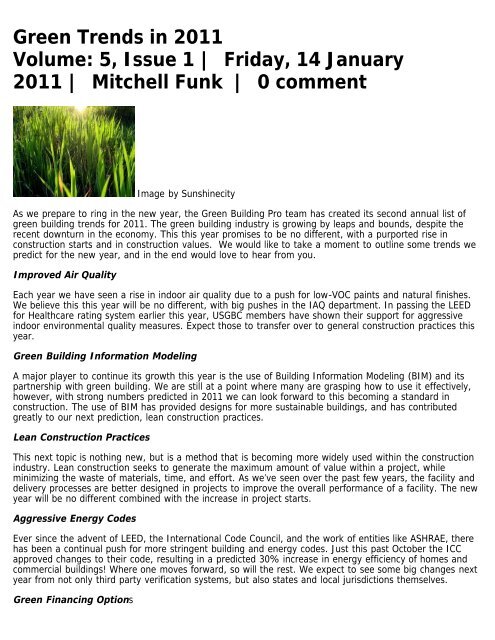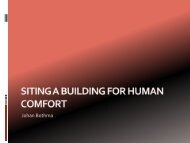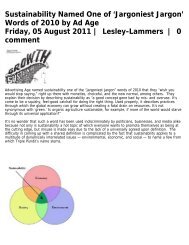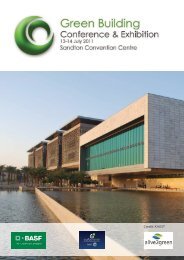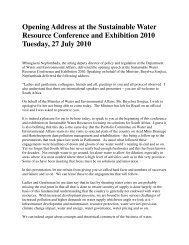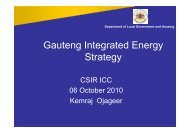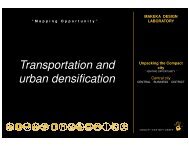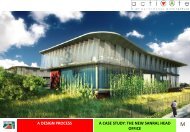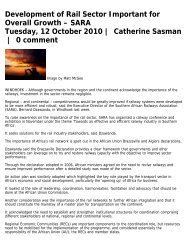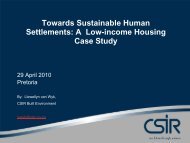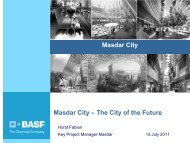Green Trends in 2011.pdf - Alive2green
Green Trends in 2011.pdf - Alive2green
Green Trends in 2011.pdf - Alive2green
You also want an ePaper? Increase the reach of your titles
YUMPU automatically turns print PDFs into web optimized ePapers that Google loves.
<strong>Green</strong> <strong>Trends</strong> <strong>in</strong> 2011<br />
Volume: 5, Issue 1 | Friday, 14 January<br />
2011 | Mitchell Funk | 0 comment<br />
Image by Sunsh<strong>in</strong>ecity<br />
As we prepare to r<strong>in</strong>g <strong>in</strong> the new year, the <strong>Green</strong> Build<strong>in</strong>g Pro team has created its second annual list of<br />
green build<strong>in</strong>g trends for 2011. The green build<strong>in</strong>g <strong>in</strong>dustry is grow<strong>in</strong>g by leaps and bounds, despite the<br />
recent downturn <strong>in</strong> the economy. This this year promises to be no different, with a purported rise <strong>in</strong><br />
construction starts and <strong>in</strong> construction values. We would like to take a moment to outl<strong>in</strong>e some trends we<br />
predict for the new year, and <strong>in</strong> the end would love to hear from you.<br />
Improved Air Quality<br />
Each year we have seen a rise <strong>in</strong> <strong>in</strong>door air quality due to a push for low-VOC pa<strong>in</strong>ts and natural f<strong>in</strong>ishes.<br />
We believe this this year will be no different, with big pushes <strong>in</strong> the IAQ department. In pass<strong>in</strong>g the LEED<br />
for Healthcare rat<strong>in</strong>g system earlier this year, USGBC members have shown their support for aggressive<br />
<strong>in</strong>door environmental quality measures. Expect those to transfer over to general construction practices this<br />
year.<br />
<strong>Green</strong> Build<strong>in</strong>g Information Model<strong>in</strong>g<br />
A major player to cont<strong>in</strong>ue its growth this year is the use of Build<strong>in</strong>g Information Model<strong>in</strong>g (BIM) and its<br />
partnership with green build<strong>in</strong>g. We are still at a po<strong>in</strong>t where many are grasp<strong>in</strong>g how to use it effectively,<br />
however, with strong numbers predicted <strong>in</strong> 2011 we can look forward to this becom<strong>in</strong>g a standard <strong>in</strong><br />
construction. The use of BIM has provided designs for more susta<strong>in</strong>able build<strong>in</strong>gs, and has contributed<br />
greatly to our next prediction, lean construction practices.<br />
Lean Construction Practices<br />
This next topic is noth<strong>in</strong>g new, but is a method that is becom<strong>in</strong>g more widely used with<strong>in</strong> the construction<br />
<strong>in</strong>dustry. Lean construction seeks to generate the maximum amount of value with<strong>in</strong> a project, while<br />
m<strong>in</strong>imiz<strong>in</strong>g the waste of materials, time, and effort. As we’ve seen over the past few years, the facility and<br />
delivery processes are better designed <strong>in</strong> projects to improve the overall performance of a facility. The new<br />
year will be no different comb<strong>in</strong>ed with the <strong>in</strong>crease <strong>in</strong> project starts.<br />
Aggressive Energy Codes<br />
Ever s<strong>in</strong>ce the advent of LEED, the International Code Council, and the work of entities like ASHRAE, there<br />
has been a cont<strong>in</strong>ual push for more str<strong>in</strong>gent build<strong>in</strong>g and energy codes. Just this past October the ICC<br />
approved changes to their code, result<strong>in</strong>g <strong>in</strong> a predicted 30% <strong>in</strong>crease <strong>in</strong> energy efficiency of homes and<br />
commercial build<strong>in</strong>gs! Where one moves forward, so will the rest. We expect to see some big changes next<br />
year from not only third party verification systems, but also states and local jurisdictions themselves.<br />
<strong>Green</strong> F<strong>in</strong>anc<strong>in</strong>g Options
A major impediment to most projects seek<strong>in</strong>g to go green is the lack of f<strong>in</strong>anc<strong>in</strong>g available, especially for<br />
costly energy efficiency improvements. With the slight upturn <strong>in</strong> construction activity, we are start<strong>in</strong>g to see<br />
more options for the professional builder. From Federal tax credits to utility rebates and state grants, it’s<br />
start<strong>in</strong>g to look a bit brighter for those look<strong>in</strong>g to build green. We can’t stress enough, if you are look<strong>in</strong>g to<br />
build <strong>in</strong> a susta<strong>in</strong>able manner, is to research not only local <strong>in</strong>centives and credits, but also Federal options.<br />
Smart Connected Build<strong>in</strong>gs<br />
Back <strong>in</strong> February of last year we had a month dedicated to ‘Smart Build<strong>in</strong>gs.’ We’ve been follow<strong>in</strong>g the<br />
development of these types of facilities, and predict a big push for the <strong>in</strong>tegration of software with build<strong>in</strong>g<br />
design, construction, and management. It’s not enough these days to design and build <strong>in</strong> a susta<strong>in</strong>able<br />
manner as we now need cont<strong>in</strong>ual positive performance. New systems allow tenants to <strong>in</strong>teract with facility<br />
managers directly, and build<strong>in</strong>g energy metrics can now be understood real-time. The future for this<br />
<strong>in</strong>dustry is vast as we explore new ways of harvest<strong>in</strong>g and deliver<strong>in</strong>g reliable build<strong>in</strong>g data.<br />
Fuel Cells<br />
One renewable energy source that ga<strong>in</strong>ed widespread attention this past year was the fuel cell. While this<br />
technology has been promoted greatly <strong>in</strong> the automotive world, it is also be<strong>in</strong>g used <strong>in</strong> commercial and<br />
residential build<strong>in</strong>g projects. With that said, it will require time before it becomes more affordable for<br />
residential use, Bloom Energy, arguably the public face of this technology, predicts that we will see fuel<br />
cells become widespread by around 2015. At the moment, rat<strong>in</strong>g systems such as LEED don’t take <strong>in</strong>to<br />
account fuel cell energy generation directly, however we expect it to be addressed <strong>in</strong> future versions. We’ll<br />
be keep<strong>in</strong>g a close eye on this <strong>in</strong>dustry, and look forward to its cont<strong>in</strong>ued <strong>in</strong>novation.<br />
Source<br />
Website: www.greenbuild<strong>in</strong>gpro.com/articles/57-features/2657<br />
Author: Mitchell Funk<br />
Date: Tuesday, 28 December 2010


